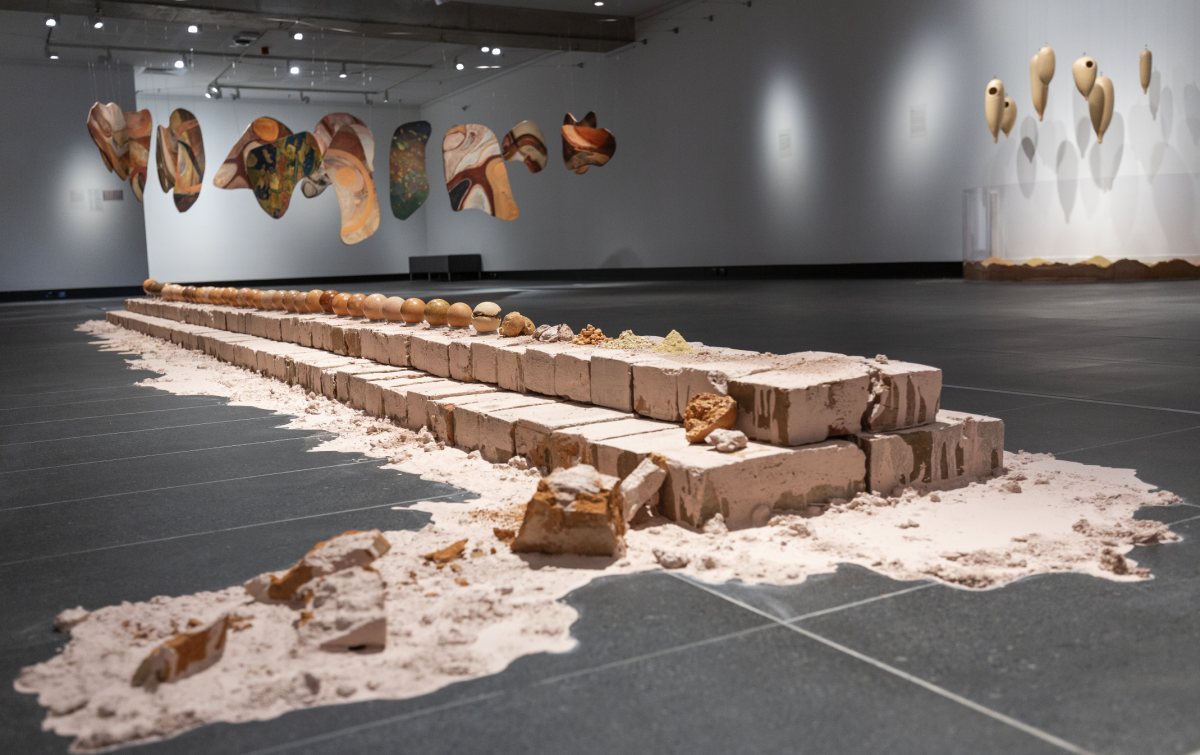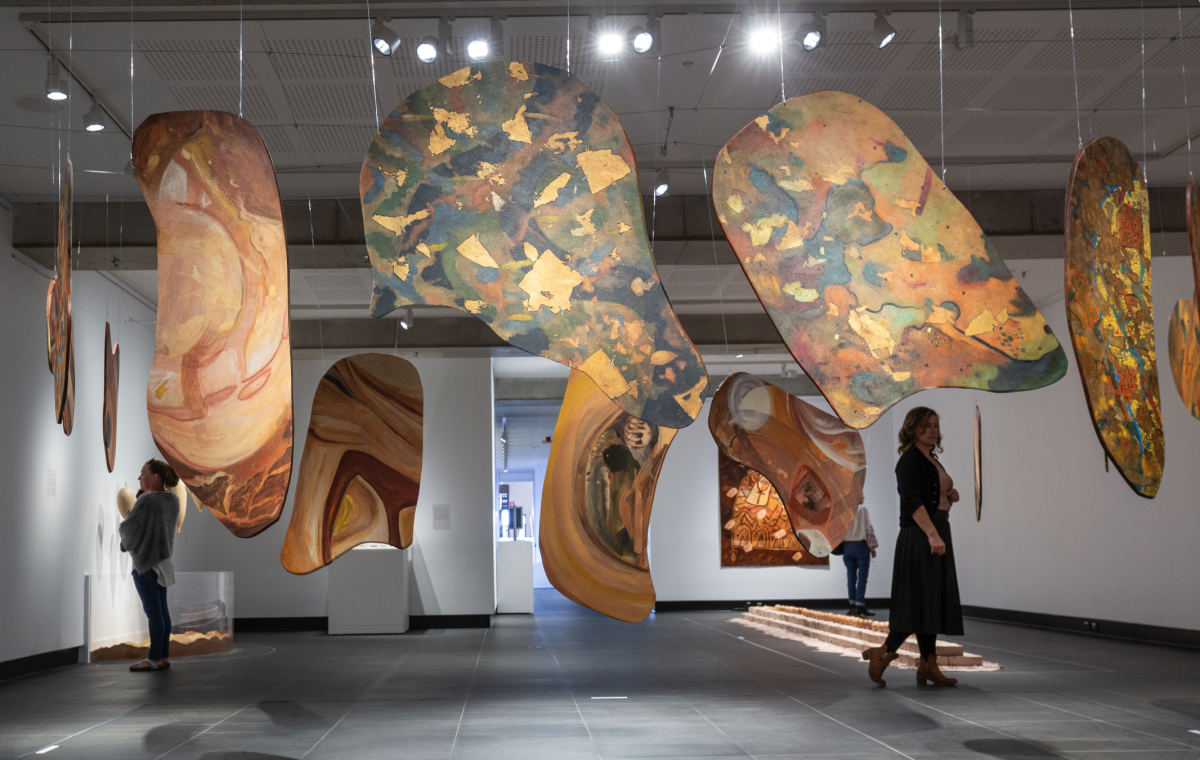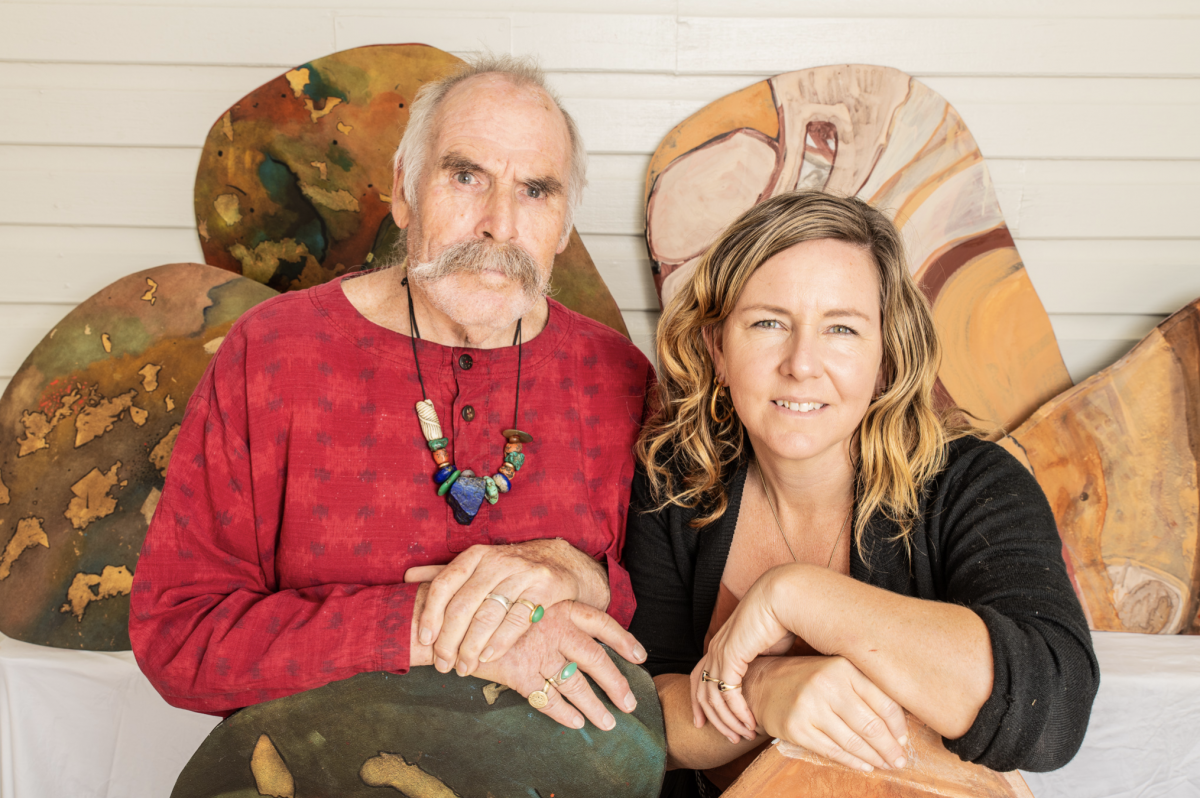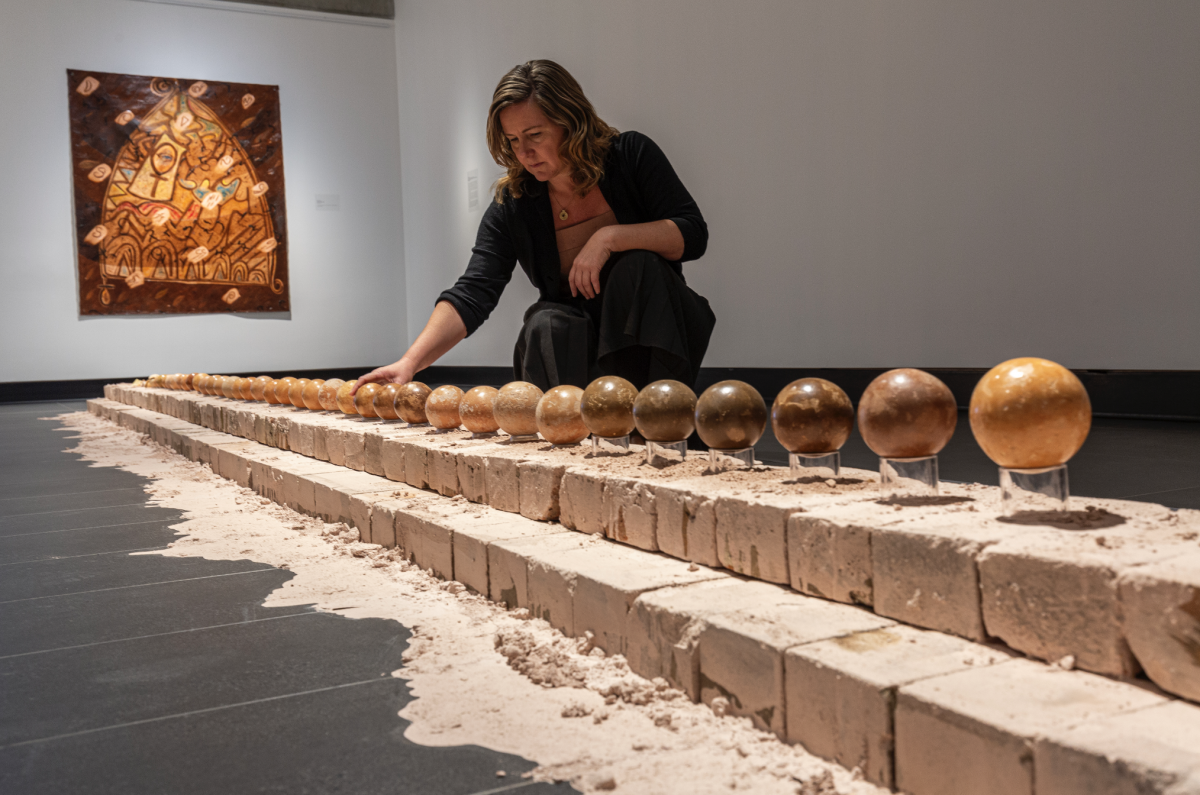03 October 2023

Written by Carol Schwarzman
Relative Terrains is an immersive and collaborative exhibition by Northern Rivers artist Karma Barnes and Dutch painter Robèrt Franken. Celebrating the profound impact of relationships on our lives, this exhibition invites visitors through a series of large-scale installations, to delve into the intricate web of connections that shape and transform us.
At the heart of this exhibition lies the use of earth pigments – the material, interface, and mediator through which different elements converge. Utilising pigments collected from disturbed landscapes, including landslides and eroded sites, the work brings attention to the current increasing climatic events. The installations serve as catalysts for reflection, prompting us to contemplate how these external forces are reshaping and shifting our internal landscapes and terrains.
Originally conceived for the Lismore Regional Gallery, Relative Terrains found a new home at Grafton Regional Gallery after the devastating floods of the region in 2022. The unexpected relocation reaffirms the resilience and adaptability of both the exhibition and the power of art to transcend challenges.

Karma Barnes, is a New Zealand-born artist living and working on Bundjalung Country in the Northern Rivers for the last 12 years and has gained recognition on the international platform in recent years by captivating a wide range of audiences with her site-specific works. The collaborative partnership with Dutch-born painter and sculptor Robèrt Franken has its origins in Pōneke – Wellington, Aotearoa- New Zealand as a student-teacher relationship, which has evolved into a friendship and collaboration forged over 25 years.
Palimpsest: Echoes of Creation and Transformation (2023), a three-year project, that coalesces the artists’ shared concerns into true collaboration. This large-scale installation combining painting and sculpture is comprised of earth pigments, acrylics and oils, and ink on prepared marine ply. Palimpsest presents fifteen large, cut-out biomorphic shapes hung from the ceiling, forming a circle. Each shape is painted on both back and front, with Barnes using paints, on one side, made from foraged pigments, and Franken, painting on the reverse, employing traditional oil paints and ink. Together, their respective painting styles refer to a central thematic thread of Relative Terrains, namely, that the landscapes in which we conduct our lives affect our experience of life – from our immersion in slow transitions of deep geological time, to cataclysmic environmental events which occur increasingly often. Barnes’ softly-hued, mineral-toned paint, applied in graceful, fluid passages, suggests an introspective landscape of thoughtful reflection on life experience. She says of working with found, natural pigments that, “Earth pigments, produced by natural forces over aeons, are the material, interface and mediator through which different elements meet, carrying the records of the land’s creation and transformation that are metaphors for our own stories as co-creators of our life’s evolutionary process”. Franken’s compositions speak more of aerial maps of physical terrain of mountains, valleys, paths and waterways. Yet both artists’ aesthetic voices speak of the Earth, of our profound relationship to the soil, and of the imprint of time on humanity, embodied in the natural world.

Known regionally for her social engagement and participatory art projects a feature of the exhibition in the presentation of Mapping Internal & External Terrains – Community Cartography (2023). The work has been produced with pigments submitted by community contributors and studied in follow-up workshops across Lismore Regional Gallery and Grafton Regional Gallery exploring the intersection of art, mapping, and personal experiences through collection and identification of earth pigments of Bundjalung Country, Northern Rivers area, NSW.
Examples of pigment samples and stories include: “Bush fire charcoal taken from the landscape of the Northern Rivers bush fires of 2019”; “Murwillumbah flood mud 2022, South Murwillumbah flooded shed”; and “Red Rock composed of 300-million-year-old Jasper”. In these works, Barnes has composed pigment samples into lush tonal arrays of subtly varying reds and yellows, umbers, greys and black. This methodical study of the aesthetic qualities of pigment hints at quantitative data produced by scientific rigour. However, the installations comprise material and emotional cartographies mapping human and nonhuman narratives, made to rebuild and strengthen bonds of attachment, to push back against crisis and loss, and to care for beauty and country. Rather than emerging from a purely factual, scientific regimen, these collaborative works accentuate intersubjectivity of living and non-living entities entangled through aesthetics, experiences and influences exchanged over time. Barnes’ and Franken’s collaborative efforts steadily remind us to value our interconnectedness, and prompt us to contemplate the ways in which these external dynamics have reconfigured and altered our internal landscapes and terrains.
Carol Schwarzman is a visual artist and arts writer based in Meanjin/Brisbane. She is currently a PhD candidate at University of Queensland. Her research focuses on art-science collaborations with nonhumans in the Anthropocene.
Relative Terrains is on at Grafton Region Gallery until November 12th.

Images: Homepage – Simon Hughes, 1, 2 & 4 – Yaka Ademic, Portrait – Jay Penfold